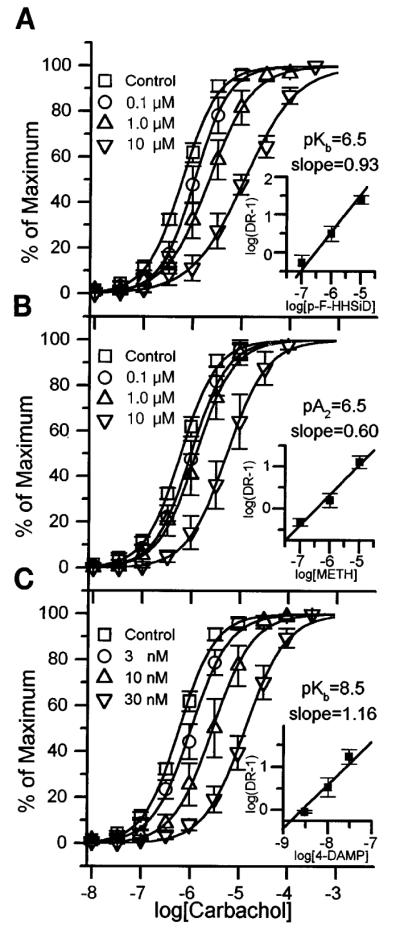Fig. 2.

Carbachol dose-response (DR) displacement curves and Schild plot (insets) for p-fluoro hexahydrosilodifenidol (p-F-HHSiD; A), methoctramine (B), and 4-diphenlacetoxy-N-methylpiperidine methiodide (4-DAMP; C) effect on denervated rat bladder strips in vitro. Each antagonist curve represents average responses of 5 muscle strip preparations (1 strip from each of 5 denervated rats), whereas control curve represents the average of 14 muscle strips expressed as percent of each individual strip’s maximal carbachol response. These maximal responses (averages ± SE) were 32.3 ± 2.8 mN for control; 26.6 ± 2.2, 34.0 ± 5.4, and 27.2 ± 4.7 mN for 0.1, 1, and 10 μM p-F-HHSiD respectively; 26.2 ± 3.2, 34.2 ± 5.7, and 37.6 ± 5.9 mN for 1, 3, and 10 μM methoctramine respectively; and 37.8 ± 7.5, 36.7 ± 7.2, and 32.0 ± 3.7 mN for 3, 10, and 30 nM 4-DAMP, respectively. There was no significant difference in maximum between these groups.
